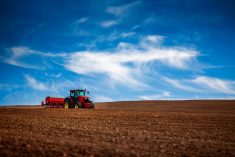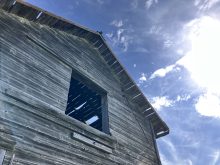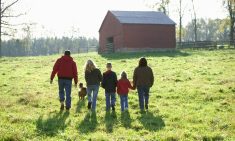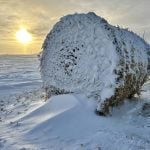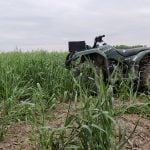Bert Gillis loved to fly but never earned his pilot’s licence. For most of his life he farmed north of Wynyard, Sask. in partnership with his two brothers and sister-in-law. During the Second World War he was a mechanic in the Air Force. His job was to repair training planes at the air base in Winnipeg. He loved the sound of the big radial engines that powered the yellow airplanes dotting the sky during wartime. When the war ended Bert returned to the farm, but flying had captured his imagination and interest. Whenever he could get an airplane ride, he was delighted.
Read Also

Farmland values: assumptions and realities
Where farmland values are headed and what decisions farmers should make
Last autumn Bert’s friend Forrest Pederson, an 82-year-old retired pharmacist, decided he wasn’t flying enough to justify owning an airplane. Forrest put his Cessna 172, a single-engine plane with four seats, up for sale. It sold quickly. The date for the new owner to pick it up was drawing near.
Bert and Forrest had been planning a plane ride but kept putting it off. Bert was struggling with cancer. His energy level was low and he did not feel well. When he turned 90 he realized “he would have to slow down.”
Forrest called Bert a few days before the new owner came for the Cessna. He could not let his airplane go without keeping his promise to Bert. Besides, he wanted one last flight before giving up his beloved plane.
The two old friends went out to the airport, unlocked the plane, checked it out and were soon airborne. It was a lovely autumn day. They flew over Bert’s farm, circled the town then explored the Quill Lakes. As they surveyed the familiar landscape from their perch in the sky, memories flowed. Forrest described the day: “There were lots of combines in the fields. The gold stubble fields, green trees and blue water were beautiful.”
As Bert’s health declined, his friend Duane Guina assumed more responsibility for his care. Duane borrowed a hospital bed and moved Bert to his home where he had some extra care for the last days of his life.
I went to see Bert a few days before he died. When I asked him about the flight his eyes lit up. “We had to climb a little higher because there were so many flocks of geese flying around that day.” I smiled. My pilot manuals tell me that the Quill Lakes are a stopping point on the largest migratory route in North America. Thank God the two elderly fliers climbed higher.
Duane’s emotions moved from alarm to relief when he learned the two old fellows, the pilot 82 and the passenger 90, had gone flying. “It is probably good that I didn’t know about it until Bert told me the next day.” Duane asked Bert how he had managed to get into the little airplane. “Forrest helped me.” Dr. Sherwin B. Nuland, a surgeon who wrote How We Die: Reflections of Life’s Final Chapter says: “The greatest dignity to be found in death is the dignity of the life that preceded it.”
That autumn flight was the last for Forrest in his airplane, and Bert’s last before he died. I thought about Bert’s long and interesting life when I was reading Professor Anthony Grayling’s version of Psalm 113 in The Good Book: “When we come into the world we weep, while others round us smile. May we live that when we die, we smile, and others round us weep.”


